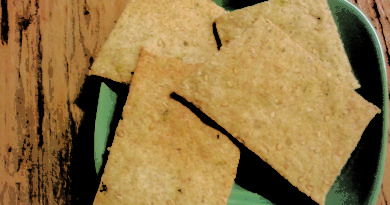Easy apple/crab apple juice from scratch
By Sari Huhtala
Growing up, my parents would make fresh crab apple juice using a Finnish steam juicer called a Mehu Maija. When all the other kids were slurping Kool-Aid, we were sipping on crab apple, rhubarb or red currant juice. Funny how you don’t appreciate until later years just how fortunate you were growing up in a home where your daily drink was a cancer fighting, vitamin C cocktail rather than a concoction of red dyes that change brain chemistry for the worse.
This fall, after a friend dropped a big bucket of crab apples at my doorstep, I figured out an easy way to make a refreshing juice that took very little effort.
Since crab apples have more polyphenols, antioxidants, than apples, it was a no-brainer to use up the leftover crab apples, and there were many, in a low-sugar crab apple compote and I even tried my hand at crab apple cider vinegar.
Crab apple fun facts
High in pectin, a particular type of fibre, crab apples help promote good bacteria in the gut, healthy bowels, balance blood sugar levels, have anti-tumor potential, can help reduce cholesterol, and may protect against colon cancer.
In Ayurvedic medicine, conditions such as gout, indigestion, constipation and inflammation have been treated with crab apples due to their high malic and tartaric acid content, which gives the fruit its sour flavour.
Easy crab apple or apple juice
8 cups of chopped crab apples, or apples (unpeeled, seeds removed)
10 cups of spring water
¼ cup of organic cane sugar, or raw honey
½ tsp cream of tartar (prevents crystallization of sugars)
Rough chop crab apples, removing the seeds, and set aside. Bring water to a boil in a large pot. Add the chopped apples to the boiling water and remove from heat. Cover with a lid and set aside for 24 hours to steep. After about 24 hours, strain all plant material from the liquid, and reheat the juice. Add the sugar and the cream of tartar and heat just until dissolved. Pour into clean glass jars. Tip: freeze juice into ice cube trays then pop into baggies for later use, or freeze in jars. Be sure to only fill 2/3 of the jar if freezing juice or liquid to avoid breakage of the glass from expansion in the freezer.
(This information is not intended to replace medical advice and treatment from a health care practitioner).
Sari Huhtala is the creator, publisher and editor of Alive and Fit Magazine. She has over 25 years experience in journalism and over 15 years experience as a certified personal trainer and fitness instructor. She is an organic farmer, wild-crafter and grandmother, who has spent over 20 years navigating a holistic, healthy path for her family.




